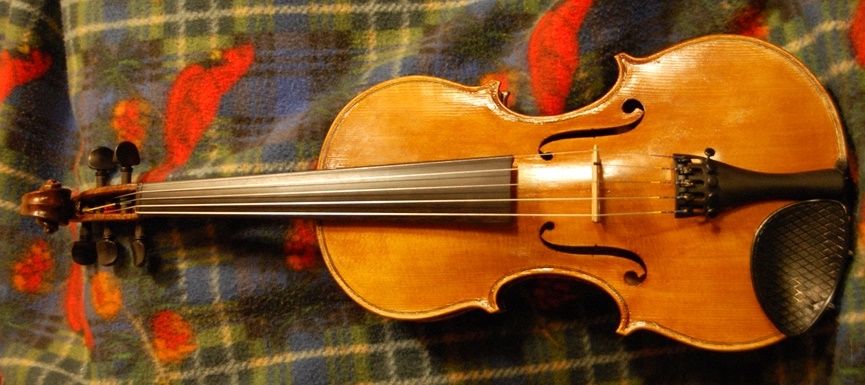Two New Handmade Five String Fiddles Begun
One Guarneri-Style, One Oliver
The last two commissions were a five-string on the original Oliver Pattern and a five-string on the slightly-wider Guarneri pattern. Both sounded great, and both customers are very happy. So, that left me wondering which one to do next. The obvious answer: Both!
.JPG)
I’m trying a new neck and scroll design on the Guarneri model. I hope it works well, because I really like the graceful look.
The instrument on the left (modeled after the 1735 “Plowden” Guarneri, with modifications to acommodate five strings) is left-over Oregon Big Leaf maple from building a five-string double bass, during the summer of last year (same as the Andy Pastor commission fiddle.)
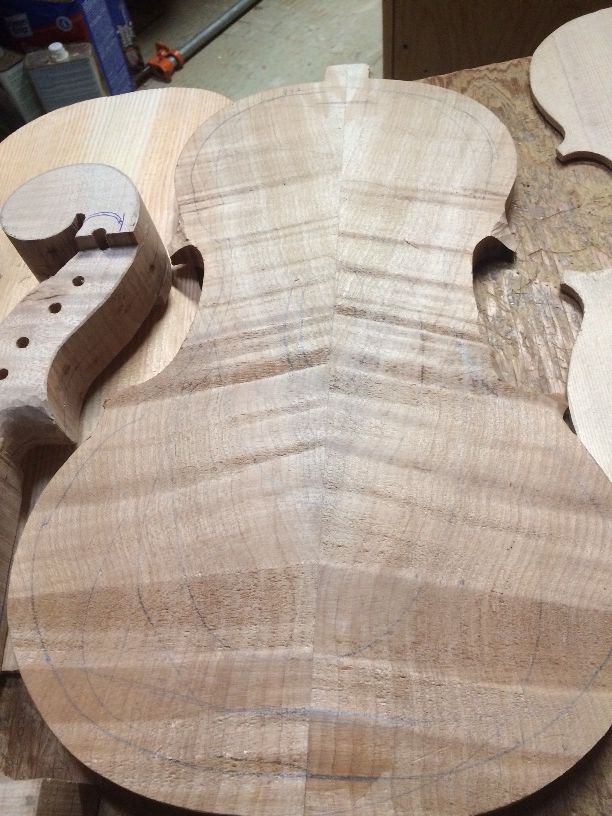
The scroll (also Oregon Big Leaf Maple) is from a tree on the property where my wife grew up, and so are the ribs. The back is from a tree on the next ridge of hills west: about ten miles by road, probably three miles in direct line-of-flight. (Same one from which the recent double bass was taken, as well as several other instruments I have made. The late Terry Howell, of Howell Tree Farm, gave me the entire log, so I have a good supply.)
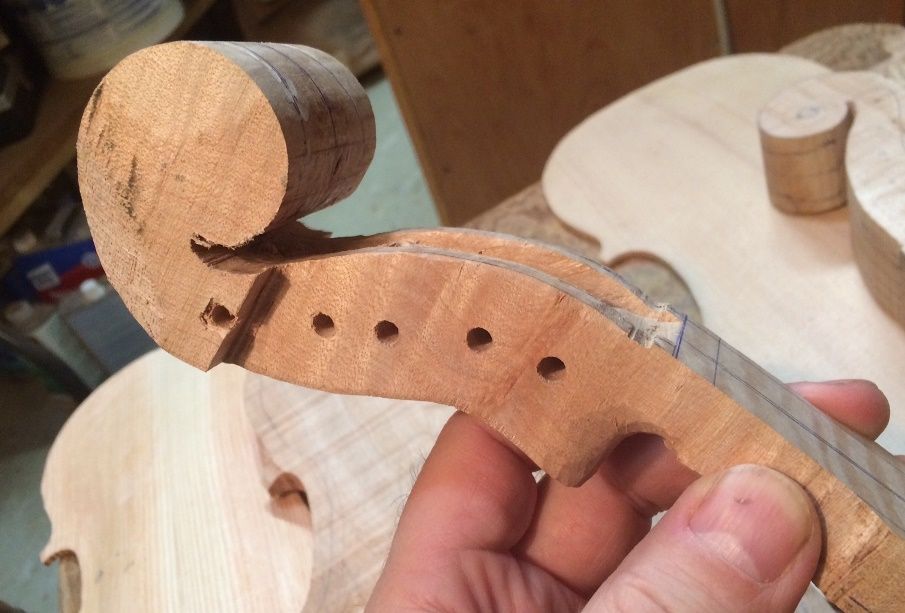
Experiment:
I have also decided to try an experiment: This will be the first time I have attempted a 5-string bluegrass fiddle with a belly of Douglas Fir, as opposed to Spruce. Otto Erdesz was famous for using it successfully in many of his instruments, so, when a friend gave me some very straight, split Douglas Fir, I decided to make the attempt, on the Guarneri model. It is quite dense compared to spruce, but it rings like a bell, when I tap it with my finger, so, I think it will be good.
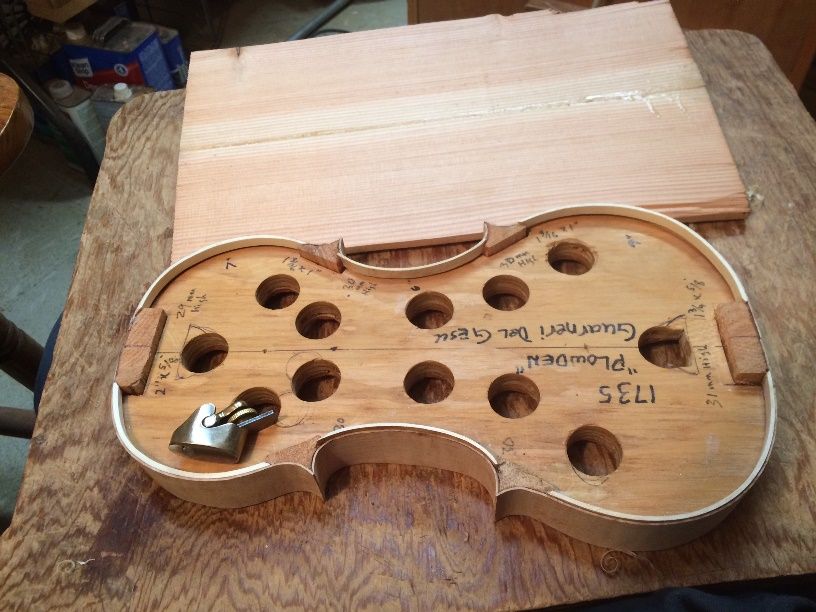
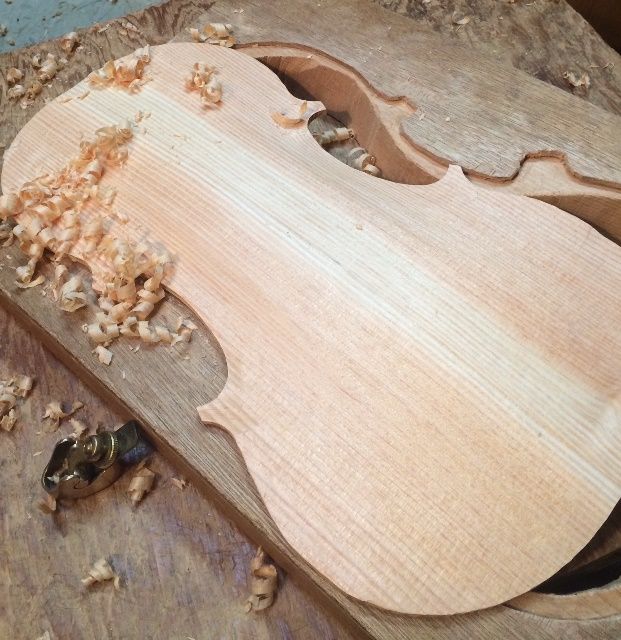
The back, as well as the ribs and the scroll on the right-hand instrument above (the Oliver-model) are all from the tree on my Mother- and Father-in-law’s property. The belly, as usual, is Sitka Spruce.
.jpg)
So, that is where things stand, today:
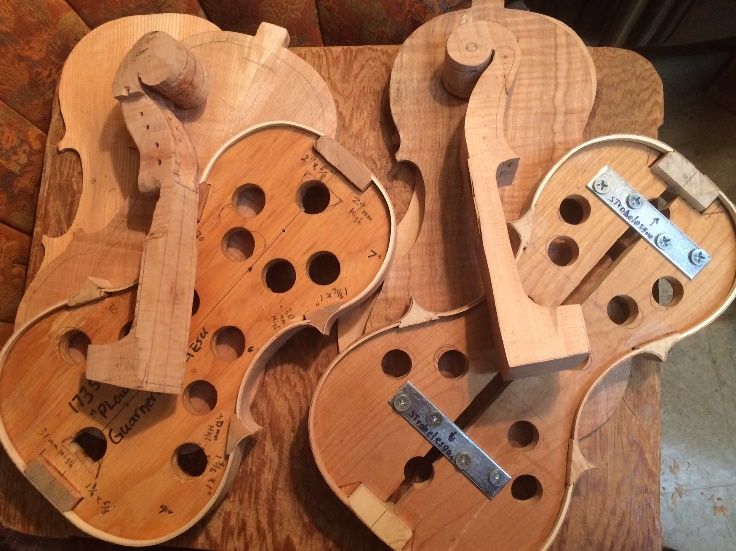
Slow Start due to Repairs and other Responsibilities
This has been a slow start: 2021 saw me needing to repair my ancient bandsaw, and, even more depressing, my drill press had succumbed to the misguided attention of a marauding mouse. (The little wretch had crawled up through the ventilation holes of the electric motor and chewed off all the insulation from about 4″ of wire!)
Saw:
The bandsaw required disassembly and drilling out a worn, threaded hole, and retapping for a helicoil. The machine will probably outlast me, now.
Drill Press:
The drill press motor had to be taken apart and a new wire soldered in place. (A friend did that one for me. I really lack confidence when it comes to electric motor repair.) Fortunately, the damage was limited to just that one wire. (Maybe the plastic insulation gave the mouse a belly-ache.)
Back in business:
At any rate, I now have both machines running again, and I was able to saw out the profiles for the remaining plates as well as drilling the pilot holes in each scroll.
I should be able to get more done, now. (Gotta prune the apple-trees, too… Spring is on the way!)
Thanks for looking.
